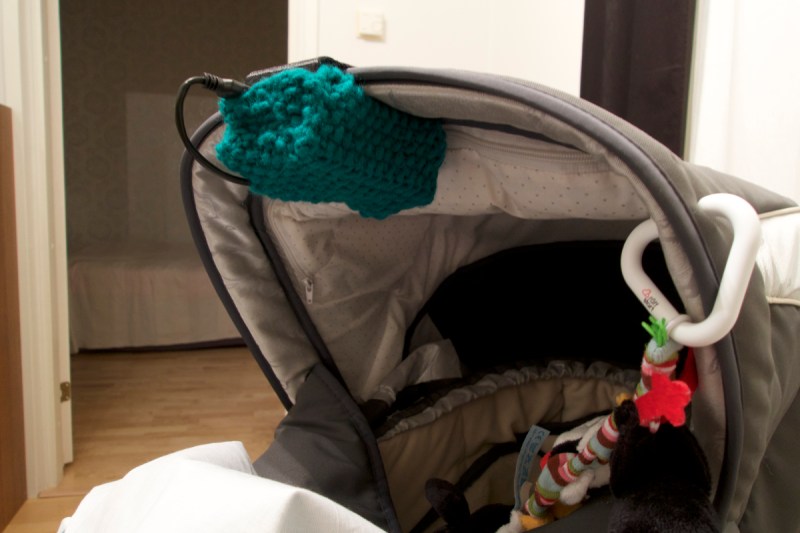“Quick! We’re having a baby and we need a baby monitor!” Rather than run to the local big box and plunk down cash for an off-the-shelf solution, any self-respecting hacker would rise to the challenge and hit the shop to build something like this live streaming eye-in-the-sky baby camera. Right?
 At least that’s how [Antibore] handled the situation, and the results are pretty good. He designed his build around an old Raspberry Pi 2 that was hanging around. That required a WiFi adapter, and since he wanted video and audio he needed a camera and mic. The first USB mic had a nice compact design but didn’t perform well, so a gutted gooseneck mic soldered right to the USB connector joined the design spec. A camera module, cell-phone quick charge battery bank, and a 3D printed case round out the BOM. A knitted cozy to keep it looking warm and fuzzy was provided by the mother-to-be — although we think it looks a little like [Mike Wazowski].
At least that’s how [Antibore] handled the situation, and the results are pretty good. He designed his build around an old Raspberry Pi 2 that was hanging around. That required a WiFi adapter, and since he wanted video and audio he needed a camera and mic. The first USB mic had a nice compact design but didn’t perform well, so a gutted gooseneck mic soldered right to the USB connector joined the design spec. A camera module, cell-phone quick charge battery bank, and a 3D printed case round out the BOM. A knitted cozy to keep it looking warm and fuzzy was provided by the mother-to-be — although we think it looks a little like [Mike Wazowski].
This self-contained unit will work anywhere it has access to a WiFi network. Mounted on the baby carrier, it’ll provide a live stream to any browser and provide the new parents with a little peace of mind.
There are a lot of baby monitors on the market, some of them terrible and in need of a rebuild. Kudos to [Antibore] for deciding to roll his own custom solution and for getting it done before the blessed event. Now how about painting that nursery?
















Xiaomi Yi Ants cam, hacked firmware, rtsp streaming in HD. View on any android device or PC. Job jobbed, for £25.
It’s true than RPi can be used in all sorts of fun ways, although for everyday use I would still count on more polished and supported consumer grade products.
(Original Yi firmware + Yi app on a cheapo tablet = baby monitor with 2-way voice, the downside is Chinese hackers might be eavesdropping)
Is it just me or does this thing look like a creepy knitted Mike Wazowski?
You’re right. I can’t believe the author missed that. [/s]
Drat, my illiteracy confounds me again!
Nice peace of writing, Dan! ????
When my spawn first popped forth, I thought I could just dummy up a sweet video baby monitor with a couple old smartphones from the obsolete smartphone drawer all of us have. A couple IP Camera app downloads later and we were in business, or so I thought. But whatever I tried, the receiving device always seemed to play back slightly slower than the sending, so that after a while it was several minutes behind reality, which kind of defeated the purpose. Even tried HTML5 playback option to play back at >1.0x speed, no joy. Never did find a way around this in the remaining post-newborn hack-time, so ended up with an off-the-shelf analog audio unit. Anyone else encountered this?